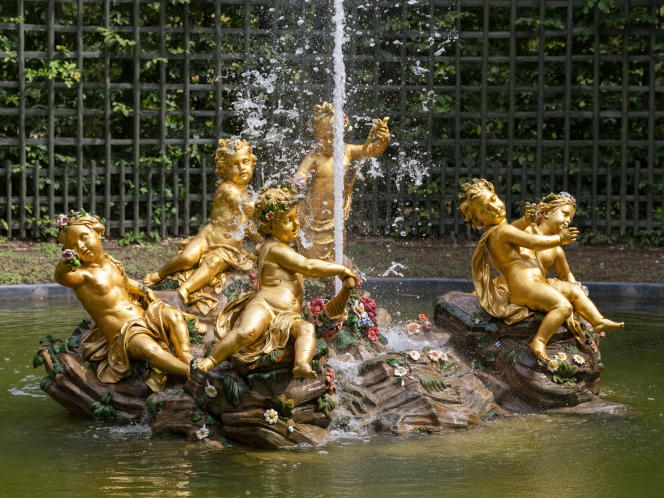THE MORNING LIST
From the murmuring waterfall to the triumphant water games of the Sun King’s domains, water is everywhere in the historic gardens. It is staged there with immobile mirrors of water reflecting the sky or gushing, animating stone fountains or water buffets with sparkling gilding. But it also flows from more discreet sources, meandering through shady undergrowth, to the delight of walkers who are not afraid of getting lost.
Buffets, fountains and Grandes Eaux in Versailles
Versailles or the quintessence of gardens, wanted by Louis XIV for his glory and implemented by a brilliant “gardener”: André Le Nôtre (1613-1700). Thanks to his mastery of perspective and the art of gardens, he transformed a marshy area into the most beautiful garden of its time. Absent and yet essential, the water was diverted by hand or drawn from the Seine thanks to a (deafening) machine located in Marly and poured into gigantic reservoirs. The science of the best Italian fountain makers was called upon to supply the innumerable fountains, the decorations of which were designed by the greatest artists of the time.
From the terrace of the château, the water parterre, the Latona fountain, the basin of Apollo’s chariot (currently being restored) and the Grand Canal follow one another along the main axis of the gardens round). To the south, facing the Orangery, but separated from the castle, the Swiss pond, open to walks, runs along the King’s vegetable garden, with its imposing royal gate. To the north, the Dragon Basin and Neptune Basin regularly come to life with spectacular water effects, as do the groves of the Colonnade, the Enceladus, the Ballroom and the Baths of ‘Apollon, during the Musical Fountains Show or the Musical Gardens (paying). Not to mention the Trianon Water Buffet, recently restored in its marble and gold, and refilled with water.
Palace of Versailles, Place d’Armes, Versailles. The park and gardens are open daily, with extended hours in summer. The gardens are chargeable during Great Musical Waters and the Musical gardens. Admission is charged for the Domaine de Trianon (including the Queen’s Hamlet). Practical information on Chateauversailles.fr
Bather and “gueulards” in Courances
The Château de Courances, in Essonne, built in the 17th century, underwent major alterations in the last quarter of the 19th century, including the addition of an exterior staircase inspired by that of Fontainebleau. The design of certain parts of the park is Renaissance, therefore prior to the creations of Le Nôtre at Vaux-le-Vicomte, Chantilly or Versailles. The main body of water, the Mirror, which covers an area of one hectare, dates from the 18th century, the Baigneuse and Horseshoe basins from the beginning of the 20th century, during work carried out by a grandfather of the current owners. The pond in the elegant Japanese garden is more recent.
You have 59.95% of this article left to read. The following is for subscribers only.
